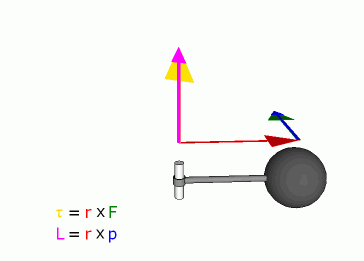|
|
||
angular momentumN·m·s (kgm2s-1). Because of the cross product, L is a pseudovector perpendicular to both the radial vector r and the momentum vector p. If a system consists of several particles, the total angular momentum about an origin can be obtained by adding (or integrating) all the angular momenta of the constituent particles. Angular momentum can also be calculated by multiplying the square of the displacement r, the mass of the particle and the angular velocity. REAL Services 700 Portage Trail Cuyahoga Falls, OH 44221.3057 voice: 330.630.3700 fax: 330.630.3733 © 1995-2005 REAL Services® U.S.A. - Analytical Almanac All Rights Reserved |
||
